La Statue de la Liberté à Gourin : Un symbole de l'émigration bretonne vers l'AmériqueBienvenue à Gourin, une charmante commune nichée au cœur de la Bretagne, où l'histoire et la culture s'entremêlent pour créer un lieu empreint de fascination. Cette année, Gourin s'apprête à célébrer la Fête de la Libération, un événement annuel marquant le 5 août 1944, lorsque les premiers véhicules de la 6e division blindée américaine traversèrent la ville, déclenchant une explosion de joie parmi la population. Les festivités seront encore plus spéciales cette fois-ci, car nous célébrons également le 79e anniversaire de cet événement mémorable en inaugurant la Statue de la Liberté en bronze. Ce symbole emblématique, rappelle avec émotion l'émigration bretonne vers les États-Unis et symbolise l'amitié franco-américaine. Mais l'histoire de cette statue va bien au-delà d'un simple cadeau. Elle est le fruit d'une extraordinaire mobilisation de la communauté, grâce à une campagne de financement participatif. Des centaines de généreux donateurs ont contribué à faire de ce rêve une réalité, unissant leurs efforts pour donner vie à ce symbole de liberté et de fraternité. Joignez-vous à nous pour ce week-end inoubliable les 5 et 6 août 2023, alors que nous honorons notre histoire et célébrons ensemble la liberté qui éclaire le monde. Dans cet article, découvrez tous les détails passionnants de cet événement exceptionnel et plongez dans l'histoire captivante de la Statue de la Liberté à Gourin. La Fête de la libération et l’inauguration de la Statue de la Liberté : le programmePour commémorer le 79e anniversaire de cet événement, un camp de la 2e guerre mondiale sera installé sur le parc de Tronjoly, le vendredi 4 juillet. L’association Bretagne TransAmerica profitera de l’organisation de ce weekend festif pour inaugurer la Statue de la Liberté en bronze, qui a été installée sur la place de la Victoire, clin d’œil de l’émigration Bretonne aux USA. L’inauguration est bien entendue ouverte à tous. Le programme (entrée gratuite) Samedi 5 août 2023 Parc de Tronjoly : reconstitution d’un camp allié de la seconde guerre mondiale : expositions, animations, balades en jeep, scènes de reconstitution, Barber shop Château de Tronjoly : expositions culturelles (peintures sculptures, photographies…), musée de l’émigration des Bretons en Amérique, musée des vieux outils, musée de la géologie Restauration : huîtres, moules-frites, crêpes, petite restauration 21 h 30 : Sur le camp de Tronjoly: « spectacle 44 » de 2 heures sur les plus grands hits américain de la 2e guerre mondiale avec « USA Concept » A partir de 00 h 30: au Starman, en centre-ville: « La Fête des Libertés » à l’occasion de l’inauguration de la Statue de la Liberté de Gourin Dimanche 6 août 2023 10 h 30 : départ du défilé 11 h : commémoration de la libération de Gourin Suivi de l’inauguration de la statue de la Liberté 12 h : vin d’honneur au parc de Tronjoly Restauration : huîtres, moules-frites, crêpes, petite restauration Parc de Tronjoly : reconstitution d’un camp allié de la seconde guerre mondiale : expositions, animations, balades en jeep, scènes de reconstitution, Barber shop Château de Tronjoly : expositions culturelles, musée de l’émigration des Bretons en Amérique, musée des vieux outils, musée de la géologie 16 h : le peintre Steven Gonidec peindra en musique à la longère de Tronjoly Où est Gourin : Le berceau de la Statue de la Liberté et une Terre d'ÉmigrationGourin, située au cœur du département du Morbihan en Bretagne, est une commune qui respire l'histoire et la culture. Mais derrière ses paysages pittoresques et son charme rustique, Gourin détient un héritage émouvant d'émigration. Au cours des derniers 150 ans, près de 100 000 Bretons de Gourin et des environs ont fait le choix courageux de partir vers l'Amérique du Nord, cherchant de nouvelles opportunités et une vie meilleure. Cette migration massive a profondément façonné l'âme de la ville et renforcé les liens qui la connectent aux États-Unis. Au fil des années, Gourin s'est imposée comme un véritable berceau d'émigration vers l'Amérique du Nord. Des familles entières, animées par l'esprit d'aventure et la recherche d'une existence plus prospère, ont entrepris le voyage vers le Nouveau Monde. Ce périple vers l'inconnu, empreint de courage et de détermination, a laissé une empreinte indélébile dans l'histoire de la ville. Aujourd'hui, la Statue de la Liberté, qui trône fièrement dans les rues de Gourin, est un témoignage vibrant de cette migration qui a forgé des liens d'amitié durables entre Gourin et les États-Unis. Pourquoi une statue de la Liberté au cœur de la ville ?En 1986, une première statue de la Liberté, de couleur blanche, a été offerte à l’association Gourinoise « Bretagne TransAmerica » par Air France. Ce don visait à remercier les habitants pour les nombreux billets vendus par le bureau de la compagnie, installé d’abord à Roudouallec (agence Jean Fichen), puis à Gourin (Bretagne TransAmerica). Réalisée en résine et fibre de verre, elle avait été fabriquée en l’honneur du président américain Ronald Reagan lorsqu’il avait visité les plages du débarquement, en Normandie, en 1985. Elle fut ensuite installée à Gourin où elle symbolisait l’émigration des Bretons vers l’Amérique du nord, qui a particulièrement touché la région des montagnes noires, et qui a entraîné l’installation de plusieurs guichets des compagnies transatlantiques et celui d’Air France. Dès 1905 la compagnie Générale Transatlantique a ouvert une agence à Gourin. D’autres suivront. L’agence Air France quant à elle a été ouverte à Roudouallec en 1947, jusqu’en 1987. Jean Fichen était surnommé le consul des Etats-Unis. « Je suis né aux USA », raconte-t-il, « et comme tout le monde, dans la région, savait que je parlais américain, on venait me trouver pour me demander conseil. Avec moi tous ceux qui partaient avaient en poche un dossier administratif complet. Et jusqu’au milieu des années 60, il n’y avait aucun problème pour trouver du travail là-bas. » La statue blanche a trôné dans le centre-ville de Gourin, sur la place de la Victoire, durant de nombreuses années. Elle a été remplacée, le 24 juin 2020, par une statue en bronze réalisée avec le moule de Frédéric Auguste Bartholdi, le créateur de la statue de la Liberté de New-York. C’est une reproduction à l’identique de la statue de la Liberté du Musée d’Orsay de Paris, supervisée par l’atelier de moulage du Louvre et des Musées Nationaux. La fabrication du monument a été rendue possible grâce à la participation financière de plus de 300 donateurs. La statue regarde vers l’est d’où sont arrivés les soldats de la 6e division blindée américaine le 5 août 1944, date de la Libération de la ville. La tablette qu’elle tient de sa main gauche affiche la date du « 15 de novembre 1889 », date de l’inauguration de la Statue de la Liberté de l’ile aux Cygnes à Paris, offerte par les citoyens français vivant aux USA, dans le cadre du centenaire de la révolution américaine, à l’occasion de l’exposition universelle de 1889.
0 Comments
As statues come down around the world, a sleepy town in the center of Brittany, France saw a new Statue of Liberty installed in the heart of the city. Gourin and its 3,800 inhabitants had to be surprised while buying their baguettes this Wednesday morning as a handful of municipal workers lowered a 3 meter high replica of Lady Liberty unto a waiting stone pedestal without any fanfare nor celebration. Gourin and the surrounding towns in the Morbihan have a strong connection to the United States as the region was part of the largest story of emigration in Western France over the last 120 years. Over 100,000 Bretons from the area crossed the Atlantic in search of the America dream with numbers peaking between 1950-1960. For many newcomers to Gourin the memories of this American history and connection were fading at the same rate as a small resin Statue of Liberty that no longer could weather the Breton winters. This original resin statue had been given by Air France to the city in 1986. Last summer, a crowdfunding campaign on Kengo was launched to finance a new bronze version of Lady Liberty that would renew Gourin's reputation as the American capital of Brittany. Over 300 donors generously participated in financing the 70k euros needed to caste a bronze statue of America's greatest symbol of democracy, justice, freedom and friendship with France. The global pandemic halted the planned delivery of the new statue delaying a planned ceremony that was schedule to take place in the early spring. A new Breton symbol of friendship with the USA History is usually written by the victors and the Breton story is very often absent from French history books. Brittany's place and historical connection with America is a unique one with a host of stories and individuals helping to unite both areas. An annual summer exposition by Bretagne Transamerica in Gourin highlights these stories from the American Revolution to modern times. The symbolism of a new statue to Breton and American friendship carries even greater weight today as many monuments' place and significance are being reconsidered and reevaluated. The new Statue of Liberty of Gourin opens a new chapter for greater relations and cooperation between Brittany and the USA while ensuring the preservation of the story of thousands of immigrants that struggled in the hopes of a brighter future. The pomp and ceremony that many expected for her arrival has been postponed due to the global pandemic but the mayor's office has stated that a special event is being planned for the latter half of 2020. 🗽Learn more about Brittany & US history. NY TIMES, February 1967 - They had been on their feet all day, waiting on table or working in kitchens. They were on their feet all night, dancing, at the 17th annual Brittany Ball, held last Saturday at Manhattan Center. And a lot of them were dancing again on Sunday, above La Grillade restaurant. Almost all French restaurants were represented at the ball, because almost all French restaurants have waiters or bus boys or cooks who hail from Brittany. And many of them come from one small town and its farming environs, the town of Gourin. When they first came here in the early part to this century, the Bretons worked, played and stayed so tightly together in New York that few of them learned to speak English. Nevertheless, they were promptly dubbed The Americans when they returned home. Today, most of them seem to pick up English quite fast, perhaps because not all of them still live together in the Forties around Ninth Avenue. Many have moved to Astoria, Queens, and a few live on the East Side. The Bretons, who are a Celtic people (they were driven out of England by the Anglo-Saxons about 14 centuries ago), have no great culinary tradition. “But they have a natural feel for cooking,” said Mrs. Robert Low, wife of the councilman, who has had a succession of Breton housekeepers. Mrs. Low, who said that a Breton never left without finding a replacement, has visited Bretons who have returned to France. They seem to have the capacity of being equally happy in either environment, she said. But not all have been happy back in that bleak northwest corner of France. And the Brittany Association estimates that only about halt even try to return. According to the newspaper France-Amerique, there are about 12,000 Bretons in New York City (more than one-third to the French population here). Three-quarters of the French waiters here are Bretons, the newspaper estimates. Children Stayed in France The original pattern seemed to be for the husband to go to work in a restaurant and the wife to go into domestic service. The children stayed in France until the parents either sent for them or returned home with enough money to start a small business. Today, most Bretons who come over are single and, even when they marry and have a family, they can afford to keep the children here and live on what the husband makes. Consequently the children grow up in this country and, even though they may go to French schools, they prefer to speak English, the language of television. “People take more interest in a country through their children than they would otherwise," said Jean Bodenes, owner of Le Cheval Blanc (145 East 45th Street). Mr. Bodenes, who has no children and has been here for 37 years, would like to retire to Brittany. Mr. Bodenes traces the start of the Breton restaurant monopoly to the closing of the Michelin Tire Corporation's factory in Milltown, N. J. during the Depression. A lot of Bretons had been employed there and most of them came to New York where, because they had no particular skills and little English, they went to work as dishwashers or bus boys at French restaurants. One of the leading figures in the Breton community is the ample one of Mrs. Anna Daniel, who came here in 1914 and might he considered typical of early immigrants. She went to work for a lawyer on Park Avenue (she is still in service there), married a chef who worked in a private club until his death, and had two daughters whom she sent back to France to be raised by her sister before bringing them back here. Although Mrs. Daniel owns a house back in Gourin, she does not plan to live there. “This is my home,” she said, placing her hands over heart. Mrs. Daniel used to bring a lot of girls over to work for friends of her employers. “How many times have I gone to Ellis Island to get them,” she reminisced. I would vouch for them and then get them fixed up properly so they could work in homes. Now all that has stopped." Mrs. Daniel was referring to the new immigration laws, implemented last year, under which it is necessary to have a special skill or a very close relative in order to get into this country. As a result, few Bretons are now able to come here. Restaurant owners are already worried about the situation. “In a few years it will be very difficult,” said Edouard Duthu, one of the owners of Le Marmiton ( 216 East 49th Street). Mr. Duthu is not from Brittany, but most of his employees are. “And a French restaurant without French help is not much appreciated." he added. Like most people from other regions of France, Mr. Duthu looks upon the Bretons with exasperation and admiration. “They are individuals, stubborn," he said. “But if you treat them right they work! very hard. And believe me it is no picnic to carry dishes all day. The Bretons work hard because they are used to hard work and because most of them hope some day to open a restaurant of their own. Gilbert Le Dour, a waiter at La Croisette (1063 First Avenue, at 58th Street), is no exception. On Saturday, at the ball, Mr. Le Dour was wearing sideburns and native costume and doing folk dances. On Sunday he was wearing sideburns and casual clothes and doing spine-dislocating acrobatics at La Grillade, where dancing to an Italian four-piece band costs $2 on weekend evenings. Mr. Le Dour, who has been here four years, says he likes it better here when he is here and there when he is there. “I'm mixed up,” he admitted, and added that in three months he plans to take a vacation in Gourin and marry a local girl. Grateful for Opportunities “In France I wouldn't be able to open a restaurant like this, even if I worked my whole life," said Albert Deniel, who opened La Grillade ( 845 Eighth Avenue, at 51st Street) in August. Mr. Deniel came here in 1957 and started work as a bus boy at La Potiniere (60 West 55th Street). A year later he married Lisette, who was the checkroom girl at the restaurant. They have two children who attend l'Ecole Francaise, but prefer to speak English. "We try to keep together in New York by having four or five gatherings a year.” said Roger Gourin, president of the 300-member Brittany Association. “All these nationalistic things are beginning to die out," said Deputy Commissioner of Public Events J. J. O'Brien who represented the Mayor at the ball. “But I think the Bretons are probably holding together better than any of the others.” 🌃 Bretons of NY T-shirtA New Statue of Liberty Being Made in Brittany, FranceA crowdfunding campaign has been launched to finance a new Statue of Liberty in Central Brittany. The Statue of Liberty has come to represent freedom, democracy and justice. The one in Gourin has come to symbolize the story of emigration from Brittany, France to North America and the undying friendship between USA and France. Gourin, a town of 4000 nestled in the heart of Brittany, is the epicenter of one of the unique stories of emigration from France. European immigration to the USA is often told through the Irish, German, Italy, and Polish experience. But Brittany, France can boast of over +100,000 souls making the arduous and entrepreneurial journey over one hundred years to find new beginnings in North America. This history has undeniably tied Gourin and neighboring towns to America for many decades, helping to nuture a special relationship of friendship and cooperation between USA and Brittany. To help preserve this unique history and ensure a continued link for future generations a new Statute of Liberty will be cast and erected in the city center of Gourin. A crowdfunding campaign launched by the City of Gourin will be looking to raise 60k euros to help finance the making of this new statue. To learn more and donate visit kengo.bzh Une campagne de financement participatif a été lancée pour la creation d'une nouvelle Statue de Liberté en Centre-Bretagne. La statue de la liberté est synonyme de liberté, de démocratie et de justice. Celle de Gourin en est venu à symboliser l’histoire de l’émigration de la Centre-Bretagne vers l’Amérique du Nord et de l’amitié et des liens forts entre les États-Unis et la Bretagne.
Gourin, une ville de 4000 habitants nichée au cœur de Bretagne, est l’épicentre de l’un des récits uniques de l’émigration française. L’immigration européenne aux États-Unis est souvent révélée par les expériences irlandaise, allemande, italienne ou polonaise. Mais la Bretagne peut se vanter de plus de 100 000 âmes qui entreprennent le difficile voyage et installation en Amérique du Nord sur une centaine d’années. Cette histoire est indéniablement liée à Gourin et aux villes voisines, contribuant à entretenir une forte relation d'amitié entre les États-Unis et la Bretagne. Pour aider à préserver cette histoire unique et assurer un lien continu pour les générations futures, une nouvelle Statute de la Liberté sera édifié dans le centre-ville de Gourin. La ville de Gourin a lancé une campagne de financement participatif dans le but de collecter 60 000 euros pour financer la réalisation de cette statue. Pour en savoir plus et faire un don, visitez kengo.bzh. Artiste acadien, illustrateur, écrivain et militant, Bryan Theriot exposera ses œuvres tout l’été au Château de Tronjoly à Gourin. Bryan viendra spécialement de Louisiane pour l'exposition. Rejoignez-nous le 5 juillet pour un apéritif afin de rencontrer l'artiste et en apprendre davantage sur ses inspirations et ses liens entre la Louisiane et la Bretagne. Breizh Amerika a interviewé Bryan Theriot avant son arrivée en Bretagne pour l'exposition. [Breizh Amerika] Pouvez-vous nous parler d'où votre inspiration pour votre art? [Bryan Theriot] Je suis inspiré par mon héritage cajun et par le paysage unique d'Acadiana dans le sud-ouest de la Louisiane. Je suis un artiste cajun qui souhaite raconter l'histoire du peuple acadien de Louisiane et attirer l'attention sur les problèmes environnementaux qui menacent notre unique écosystème naturel. Je suis inspiré par les gens, le paysage et la faune d'Acadiana. J'ai grandi près du studio de l'artiste cajun Floyd Sonnier à Scott, en Louisiane. Il a été la plus grande influence sur ma carrière d'artiste. Il a consacré sa vie à raconter l'histoire du peuple cajun à travers son art. J'utilise sa vie comme modèle pour assurer un avenir à la culture cajun. De la Nouvelle-Orléans aux marais du bassin d'Atchafalaya et des bayous au pays cajun, je serai toujours inspiré par mon pays. Que se passe-t-il à Gourin cet été et quel est votre lien avec la Bretagne? En juillet et août, j'expose au Château de Tronjoly à Gourin. L'exposition s'appellera "La Louisiane en Couleur" et présentera des œuvres de plusieurs de mes séries sur la Louisiane. J'aurai aussi beaucoup d'affiches que j'ai créées pour des festivals ici en Louisiane. Je suis ravi de partager la culture cajun à travers mon art avec la Bretagne. "La Louisiane en Couleur" présentera des œuvres aux couleurs vibrantes illustrant des thèmes du pays cajun. Alligators, aigrettes, le Courir de Mardi Gras et les Festivals d'Acadiana se rendront en Bretagne pour l'été. Ma connexion à la Bretagne commence avec mes ancêtres. Un grand nombre de Cajuns étaient originaires de Bretagne avant de venir de Nouvelle-Écosse. Mes ancêtres sont venus de Saint Malo et Saint Servan et de Nantes. Devrait-il y avoir davantage de liens continus entre la Louisiane et la Bretagne? Absolument! Cette relation est importante pour plusieurs raisons. L’histoire des Cajuns ne commence pas en Nouvelle-Écosse, ça commence dans l'ouest de la France. Beaucoup de familles étaient bretonnes. Cela crée un lien naturel entre la Louisiane et la Bretagne. Une belle collaboration pourrait ouvrir la porte à des échanges culturels ainsi qu’àux entreprises. Nous partageons tous les deux des industries communes comme l'agriculture, la pêche, l'énergie et le tourisme. Et notre lien le plus important est notre bataille respective pour notre langue et notre culture. Les deux régions se battent pour la survie et l'avenir de leurs cultures uniques. Ces deux régions forment une alliance naturelle. Voici quelques liens Web et les réseaux sociaux pour plus d'informations sur Bryan: Website: https://www.galleryacadie.com/our-products Facebook: https://www.facebook.com/galleryacadie BREIZH AMERIKA PROFILES va a la rencontre de Bretons expatries a travers les Etats-Unis et de Bretons en Bretagne ayant un lien économique ou culturel avec les USA. Pour participer écrivez-nous a [email protected] Le Breizh Amerika Startup Contest a fait escale à Gourin cette semaine. Une soirée de conversations intéressantes avec les dirigeants locaux politiques et économiques. Trois exemples américains sur l'entrepreneuriat et les moyens de lutter contre la fracture numérique dans les zones rurales ont été présentés. 1) Le déploiement de l'Internet haut débit (GIG city) par la ville Chattanooga, Tennessee pour stimuler la revitalisation économique 2) Le programme Tulsa Remote mis en place pour attirer des “remote worker” venus de partout aux États-Unis 3) Le Rise of the Rest, un fonds d’investissement qui organisent des pitch contest de 100 000 dollars dans 38 villes de taille moyenne en Amérique rurale. Le Breizh Amerika Startup Contest fait escale en Centre Bretagne à Gourin. Ce concours unique, initié par l'association Breizh Amerika est devenu un incontournable de la scène tech & innovation bretonne. Lancé le 16 avril au Roazhon Park de Rennes, le concours vise à donner un coup de pouce à 4 startups bretonnes sélectionnées qui souhaitent se lancer à la conquête du marché américain. L’association propose un programme d’accélération d'une semaine à New York pour comprendre le marché américain, créer des liens professionnels, rencontrer de potentiels investisseurs et créer des emplois en Bretagne. Pendant la soirée à Gourin il y aura une présentation complète de comment participer au concours et sur les liens commerciaux transatlantiques. La soirée mettra également en lumière les défis de l'entreprenariat en zone non-urbaine liés à la fracture numérique. Nous parlerons en outre des réussites dans ces zones aux USA mais aussi en Bretagne. lundi 20 mai, 19h Salle des Fêtes de Tronjoly Chemin du Roz, Gourin (Événement ouvert à tous) Comme en témoigne la réplique de la statue de la Liberté à Gourin, la région entretient une relation forte avec Big Apple. De 1880 à 1980, de nombreux habitants du centre-Bretagne sont partis aux États-Unis en quête d'une vie meilleure. "La grande traversée" retrace ce lien ténu. La grande traversée, un film de Philippe Orreindy Diffusion : lundi 1er mai 2017 après le Soir 3 Durée : 52 min Une coproduction Bleu Iroise et France Télévisions / France 3 Bretagne, avec le soutien de la Région Bretagne, de la Procirep, de l’Angoa, du CNC. Nicolas Legrand, tailleur de pierre à Roudouallec dans le Morbihan. Son nom vous dit quelque chose ? Probablement pas, et pourtant il est celui qui aurait initié cette grande vague d’immigration du centre Bretagne vers les États-Unis. En 1881 il part pour la grande traversée et revient neuf ans plus tard, riche ! L’exemple fera des émules pendant un siècle. Différentes vagues de départ de Gourin vers New-York vont se succéder au gré des difficultés économiques de la Bretagne. Des retours, aussi en réponse aux périodes difficiles que rencontrera le pays hôte : la crise de 1929 par exemple. Les deux guerres mondiales du siècle dernier marqueront une pause dans les voyages des Bretons et verront même, ironie du sort, les soldats américains effectuer le chemin vers le vieux continent. Les cousins et les oncles d'Amérique C’est ce lien émaillé d’allers-retours entre le centre Bretagne et la côte est des Etats-Unis que raconte ce documentaire. Riche en archives, ce film donne la parole aux descendants des migrants bretons. Parmi ces émigrés, certains se sont établis définitivement de l’autre côté de l’Atlantique, tout en maintenant un attachement avec la terre bretonne.D’autres n’ont fait qu’un passage sur le nouveau continent, le temps de « faire fortune ». Ces départs vont s’arrêter dans les années 1980. L’arrivée massive de Sud-Américains, plus pauvres que les Français décidera le gouvernement états-unien à fermer ses frontières à nos compatriotes. Mais Gourin et ses environs restent liés à New-York, tout le monde y a un oncle d’Amérique. Le film, La grande traversée, a été projeté en avant-première, vendredi soir, devant environ cent cinquante personnes, au cinéma Jeanne-d'Arc, en présence du réalisateur Philippe Orreindy. « C'est un documentaire cinématographique sur l'émigration bretonne aux États-Unis, depuis Gourin, qui met en avant l'action de quatre membres de l'association gourinoise Bretagne Transamerica, confie-t-il. Celle-ci fait vivre la mémoire de ce mouvement migratoire. » Christiane Jamet, Josette Jouas, Joël Sévénéant et Charles Kergaravat racontent cette épopée à laquelle eux-mêmes et leurs familles ont activement participé. Gourin, petite ville de 5 000 âmes aux confins du Morbihan a été au coeur de « la plus importante histoire de l'émigration bretonne ». Dès la fin du XIXe siècle, poussés par la nécessité, ils seront des milliers à faire « la grande traversée » pour aller tenter leur chance aux États-Unis. De l'autre côté de l'Atlantique, cette communauté bretonne qui perdure encore, ne cessera de grandir. À travers des témoignages intimes et des documents d'époque, ce film raconte cette formidable aventure humaine. Depuis une quinzaine d'années, Philippe Orreindy a réalisé plus de deux cents films, documentaires et séries à caractère culturel pour la télévision comme E comme énergie ou Voyage dans une toile. Après le succès de son court-métrage J'attendrai le suivant..., nommé aux Oscar, aux César et qui a reçu plus de 35 prix internationaux, dont l'European film award, l'Oscar européen, il s'est dirigé également vers l'écriture de fiction. Le projet, qui s'est fait en étroite collaboration avec Bretagne TransAmerica, a demandé deux ans de travail. Il a été tourné à Gourin, mais aussi aux États-Unis. Il a permis de collecter un nombre important de documents d'archives, qui expliquent cette aventure commencée il y a un siècle et qui continue encore aujourd'hui, notamment au travers des actions du New-Yorkais, Charles Kergaravat, fondateur et president de Breizh Amerika. Le film sera diffusé sur France 3 Bretagne le samedi 14 novembre, à 15 h 20, et le lundi 23 novembre, à 8 h 50, sur France 3 Bretagne, Pays-de-la-Loire, Basse et Haute-Normandie, Paris Ile-de-France et Centre-Val-de-Loire. Source Ouest France |
Categories
All
Blog Archives
June 2024
Breizh Amerikais an organization established to create, facilitate, promote, and sponsor wide-ranging innovative and collaborative cultural and economic projects that strengthen and foster relations and cooperation between the United States of America and the region of Brittany, France. |
Copyright 2014 - All rights reserved - Breizh Amerika - Privacy Policy


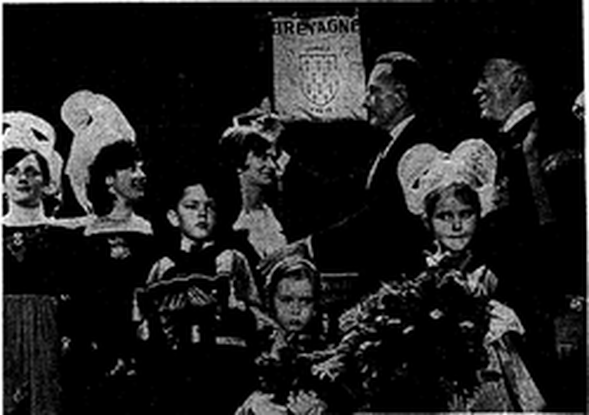
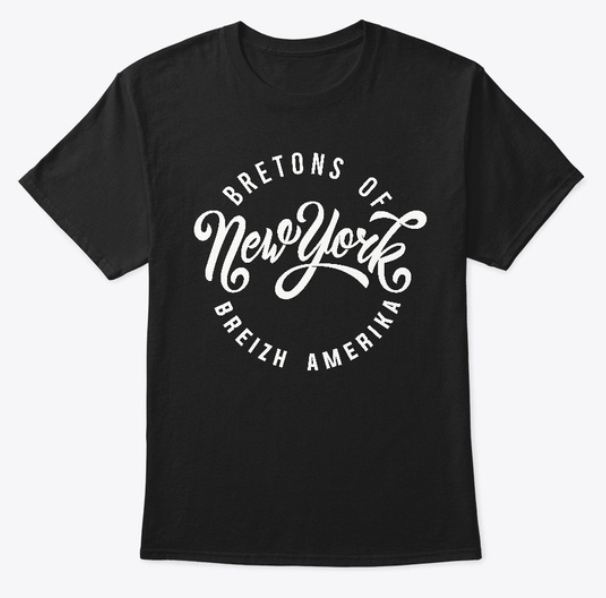

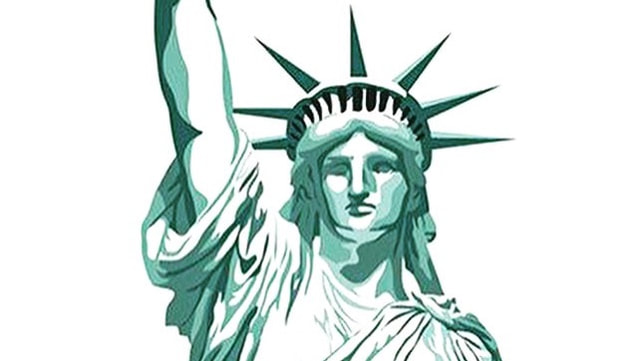
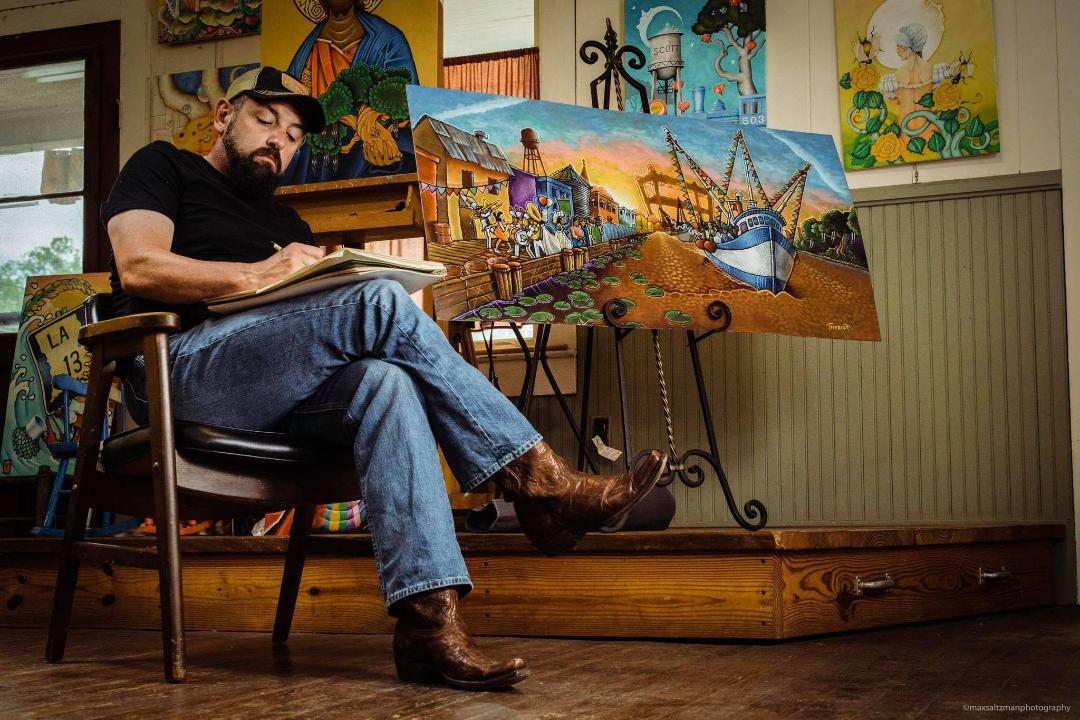

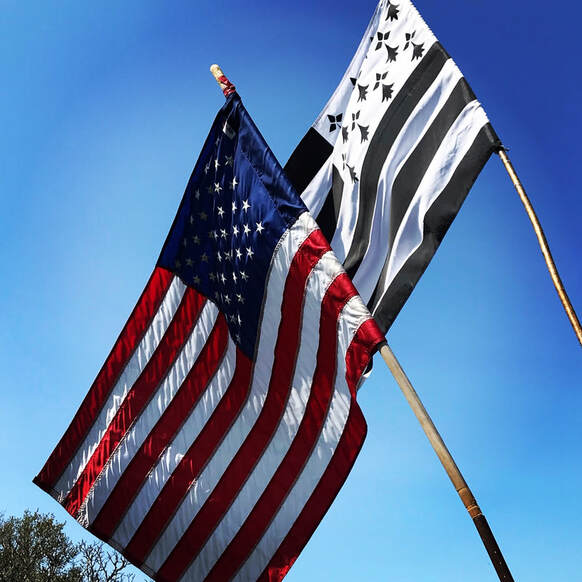
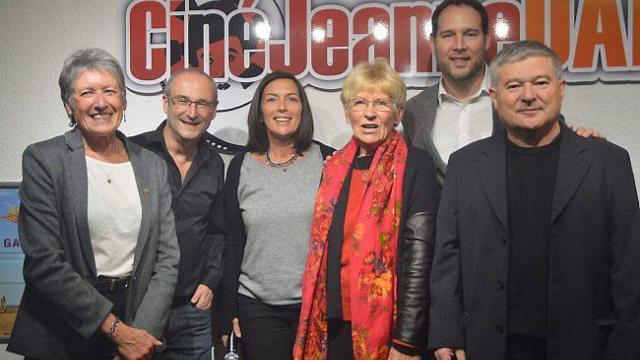
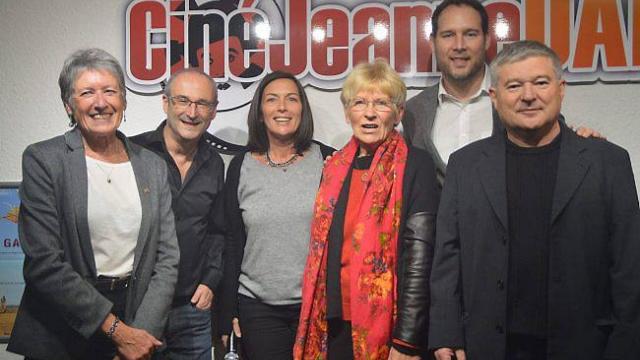
 RSS Feed
RSS Feed

